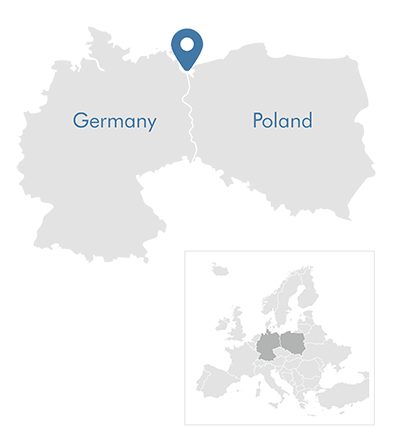Threatened Lake of the Year
Threatened Lake of the Year 2024
Szczecin Lagoon
The Global Nature Fund and the Living Lakes Network nominate the Szczecin Lagoon on the border of Poland and Germany as “Threatened Lake of the Year 2024”
The Oder gained Europe-wide notoriety in August 2022, when a mass die-off of fish made headlines. In the end, the entire course of 840 km long river was affected, stopping right before the Oder delta with the Szczecin Lagoon at its heart. Located between Germany and Poland, where the Oder meets the Baltic Sea, the Szczecin Lagoon plays a key role in preserving the biodiversity of the southern Baltic. It is one of the few ecologically widely unspoiled natural areas of Central Europe and a spawning ground for species requiring fresh and salt water. At a strategic crossing point of the East Atlantic Flyway, the Oder delta is crucial for migratory birds and the blue heart of one of Europe`s first Rewilding areas.
The Oder Delta is representative of the ecological status of water bodies in Europe. According to the EU Water Framework Directive (WFD), which has been in force since 2000, good ecological status should have been achieved by 2015 – which has not been met by any EU Member State. There are only four years left to meet the new deadline of December 31, 2027. With the nomination of a transboundary wetland in Europe, the GNF and the Living Lakes Network want to draw attention to the urgent need for action within the EU and demand the timely implementation of the WFD and other related laws.
Transboundary strategy for law enforcement and ecological restoration required
Immediate and comprehensive action from both Germany and Poland is needed to improve the ecological status of the Oder delta and the lagoon waters in the short term. Everything must be done to stop the current overloading of the water ecosystems and allow the vulnerable ecosystems to regenerate. The implementation of national and European legislation must be secured, particularly the EU Habitats Directive, the EU Water Framework Directive, and the EU Marine Strategy Framework Directive.
An important step towards the sound protection and development of the Oder delta in the long term is a long-pending transboundary strategy between Germany and Poland for the natural regeneration of the Szczecin Lagoon. This connectivity is crucial to revitalising the lagoon as an important habitat for migratory fish such as sturgeon and maraena whitefish, as well as transitional biotopes as a habitat for priority protected species after the EU Habitats Directive. No-take fishing zones and a Sturgeon Action Plan for Germany and Poland must accompany activities to restore fish stocks of important species like the Atlantic salmon, Baltic sturgeon and eel.
Another important measure is to strengthen natural water retention in the floodplain. This way, important ecosystem services like water storage and natural filters can be revitalised, and natural flood protection can be improved by restoring floodplains with riparian forests and peat land on a large scale.

“The Oder delta with the Szczecin Lagoon in its centre are among the few examples of remnants of untouched wilderness in Europe. The Oder River is one of the last rivers in Europe following natural dynamics in an almost untouched bed. The catastrophe from summer 2022 with an uncountable impact on the biodiversity and the entire wetland system, shows the vulnerability of our nature pearls in an adverse environment. This must not repeat – not in the Oder delta and nowhere else.”
Dr. Thomas Schaefer
Nature Conservation GNF

REWILDING EUROPE
Main Threats in Szczecin Lagoon
The 2022 fish die-off highlights a problem which existed long before: for decades the Szczecin Lagoon has been threatened by significant pollution from surrounding industries and nutrient inputs from industrial and agricultural activities in the vicinity and upstream, making the water body more vulnerable to the dangers of multi-causal pressures, even fostered by climate change. In recent years, shipping has increased in the area, both in terms of traffic and vessel size, adding more pressure to the lagoon waters.
Pollution from the Oder River, the Baltic Sea and the surrounding arable land leads to poisoning of emblematic species.
Overfishing and fishing in reproductive areas lead to reduced fish population and pressure on endangered fish species.
Weak connection of wetland habitats leads to fragmentation of population of endangered species.
Increased shipping brings additional risks of environmental disasters from collisions, shoaling or other hazards.
Weak law enforcement and missing management strategy leads to uncontrolled impacts and badly coordinated responses.
